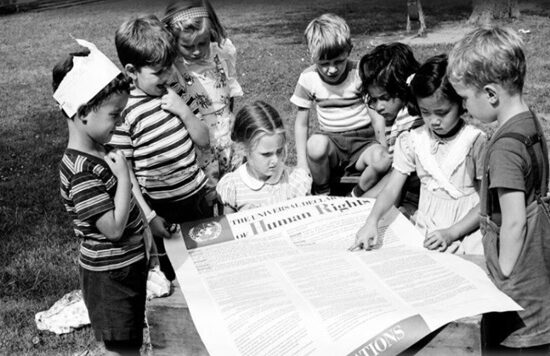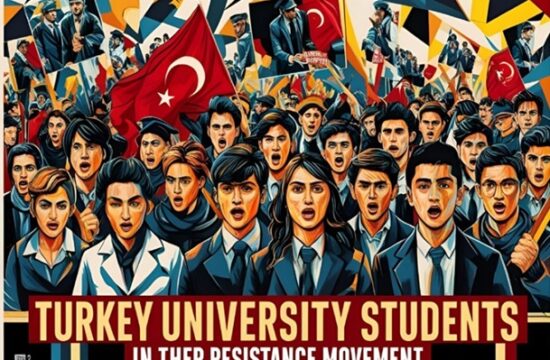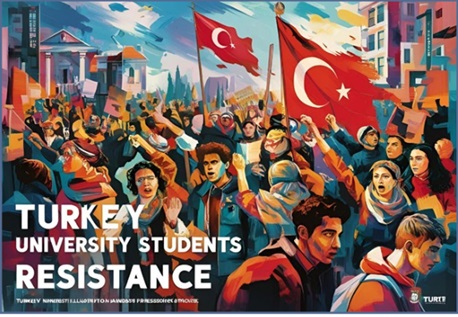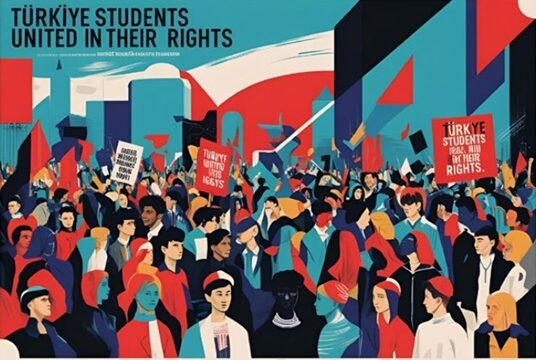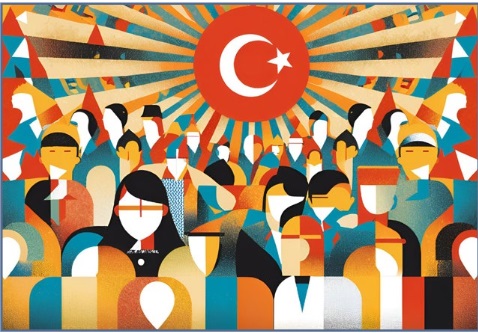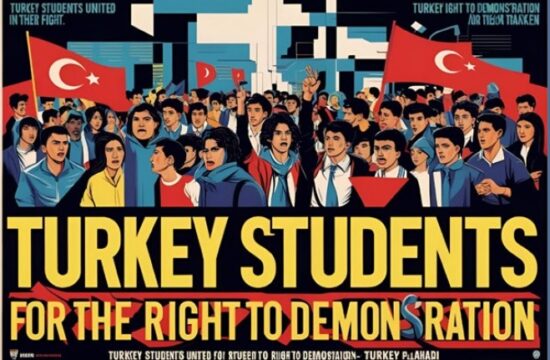Özlem
UNIVERSITY OF ANKARA
picture source: Created with AI
March 19 is not simply a date in Türkiye. The process that began with the annulment of Ekrem İmamoğlu’s university degree and his arrest is a manifestation of the youth’s exhausted patience, an echo of suppressed voices; it is the collective cry of a harassed, ignored, intimidated and silenced generation. Society, which has been living for years in increasing poverty, with years of oppression, growing authoritarianism and law and democracy exhausted day by day, is trying to rise up with the rage of a whole generation. Young people, women and workers, despite all kinds of violence, fill the campuses, the squares and the streets with a new political imagination. Limiting the issue only to the arrest of Imamoğlu would not be fair in the face of the historical anger accumulated in society; the issue is a question of rights, a question of law, a question of justice and a question of honor for the bright future of this country. In this article, as a member of this younger generation, as a college student, I will address this issue and record our testimony and our struggle.
The March 19 Resistance, which is the focus of this article, is not the outcome of a single day, but of a process spanning many years; it is the expression of a common historical memory, of the political process experienced, of the fatigue and rebellion accumulated on our shoulders. To understand this rebellion, it is necessary to go over the past a little. From Gezi Park to Boğaziçi, from the KYK riots to the appointments of rectors in universities, it is the result of repression, ignorance and marginalization.
Every demand for education, housing, freedom, justice and dignified life of this young generation, struggling to make a living often below the threshold of hunger with a growing anxiety for the future, was ignored and every raised voice was tried to be suppressed through judicial proceedings, police violence and media manipulations. The anger at Gezi Park, which was belittled as “a matter of a few trees” and denigrated by labeling young people as “looters,” later found its embodiment in Boğaziçi’s demands for academic autonomy, the annulment of İmamoğlu’s diploma and his subsequent arrest was not only an illegal act against a mayor, but also the last straw for the patience of millions of young people. For this reason, those who took to the streets on March 19 did so not only to defend a person, but to defend their lives, their future, their freedom and their rights. This voice, arising from the most vulnerable but courageous part of the people against the brutal power of the state, is very much a demand for liberation from monopoly politics.
In this sense, the first voice to be raised was that of Istanbul University, where students began to channel the anger they had built up inside from their campuses to the squares with their banners and slogans that could not be silenced in the march that began in the morning. Their anger was not only against the annulment of İmamoğlu’s diploma, but also against constant injustice, inequality and ignorance. With each step they took, their numbers increased and their voices became stronger.
As they approached Saraçhane, the barricade they encountered was not just a police barrier, it was the embodiment of the domination the government wanted to establish, and the climate of fear the government wanted to spread. However, that day that barricade fell down, nothing that tried to stand before the crowd could withstand the determination of the students. The destruction of the barricade was a turning point, the moment when sunshine was reborn, the moment when a society accustomed to silence and acceptance once again became aware of the existence of its voices. The students were not alone in saying ‘this country is ours’.
This voice echoing from Istanbul University was more than enough to raise the entire country, messages of support came from other universities and campuses rose up one after another. Meanwhile, arrests, threats and pressures made the resistance even more visible, rather than silencing it. The resistance was growing; students, women, workers were growing the resistance side by side.
The first reflex in the face of the spread of the resistance were the government stereotypes to which we have been accustomed for years; ‘marginal groups’, ‘foreign powers’, ‘traitors, terrorists’, ‘provocateurs’. Of course, the mainstream media, instead of reflecting the facts, twisted what happened, tried to cover it up with unrealistic scenarios or tried to discredit the resistance by regularly serving these stereotypes. Police violence, as always, was at the forefront; students were dragged along the ground at the gates of the universities, antiriot police trucks stood guard on the campuses.
Women were beaten in the squares, citizens exercising their constitutional rights were once again flagged by the police. There was no limit to the number of rubber bullets fired, no limit to the amount of pepper spray, there was a detention vehicle on every corner. The children of a people shouted for rights, law and justice, the State’s response was gas, batons and cruel violence. However, all this was not enough to intimidate the resistance; on the contrary, each repression attempt mobilized more people and united more voices.
The defamation has reached such an extent that students were branded as ‘provo- cateurs’, women as ‘immoral’ and workers as ‘supporters of terrorism’. The government became hostile to all those who did not shut up, did not hide, did not leave the squares. However, in the squares were ordinary people, exercising their constitutional rights. Students living in KYK dorms, young people unable to find work, laborers working night shifts for minimum wage, and women living in fear of being murdered at any moment. They all had one thing in common: they were ignored. They wanted to be seen, to be heard and to live humanely.
The government not only used the police, but also the judiciary, the media and university administrations to suppress this voice. Arrests ramped up, social media posts were taken as evidence, disciplinary investigations were launched one after the other. The goal was very clear: anyone who resisted had to be isolated, intimidated and silenced. But that didn’t work either. Because bravery was as contagious as fear. All these pressures did not lead to silence, but to even greater solidarity. Ankara, Izmir, Eskişehir, Antalya… all of Türkiye responded to the voice raised from Istanbul. The resistance was hailed by artists, academics and writers from all over the world. Statements of solidarity came from foreign universities, ‘side by side against fascism’ slogan were chanted in different languages.
Resistance did not only take place in the streets; it also manifested itself on market shelves, in credit card statements and on billboards. On this occasion, the target was not only the police barricade, but also the system of capital that had been forged over years of exploitation; society would no longer see those who did not see their resistance, and would no longer let those who did not hear their voices into their homes. The consumer boycott was not only a rejection of certain brands, but a rebellion against the entire system.
The products of the conglomerates on which the government relied remained on the shelves, and million-dollar advertising campaigns were met with public anger. Because now everyone knew very well: Exploitation was not only manifested in the squares, but also in the products we are forced to consume every day, in the normalized poverty, in the hunger imposed as a “way of life”, and this time the form of resistance was to reject the “normal”. A product withdrawn from the supermarket, a drink not bought in a coffee chain, every organized collective attitude against big business puts one more stone in the crack of this artificial order. They wanted to be citizens, not consumers. They chose not to play by the rules of the system, but to break the rules. And at that moment, not only the barricades fell, but also the shelves.
Today the resistance is still alive, still in the streets, still in words. Resistance has no age, gender or class. This illegality, injustice and inequity is common. If one of us remains silent, we all lose; if we remain silent today, we lose tomorrow. And those who are most aware of this are Generation Z, who were born into this government, witnessed every moment of it and were not even allowed to imagine another government. They bring the most creative response to the crisis, they do not accept mere survival. The more they want to silence themselves, the more they speak and the more they repress themselves, the more they embrace each other. This is not only the resistance of today, but also the beginning of the construction of the future. The tomorrow of resistance will continue to make its presence known in plazas, campuses, forums, digital platforms and everywhere. Because this rebellion is not fueled by hatred but by hope, not by obstinacy but by right. And hope will stubbornly live on despite all the pressures. We exist, we will exist.
Every word we say will be a slap in the face to those who try to suppress us. We will grow bigger and stronger with every word. We will build a memory, a memory of resistance. This article is not only about the present, but also about the future. Because nothing is over yet. The resistance continues, will continue, will grow, will win. We will continue writing, explaining and resisting. We will not abandon our pens nor leave the squares. We will exist again in the tomorrows we deserve



